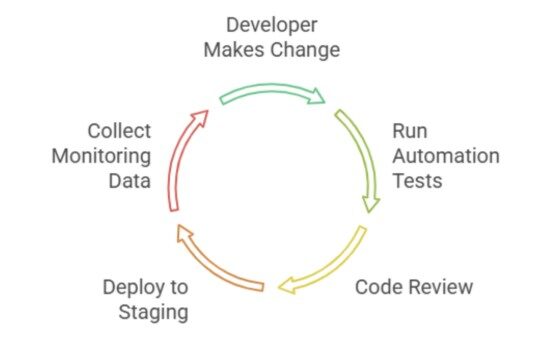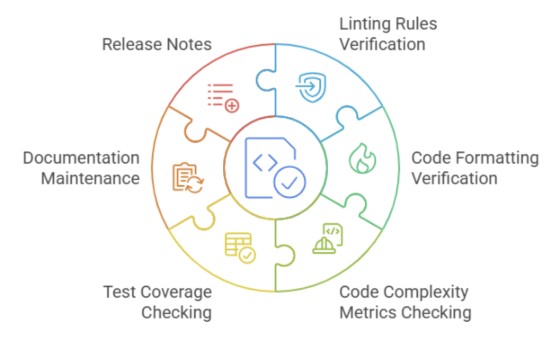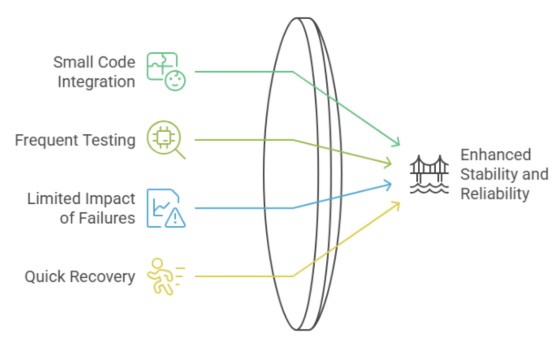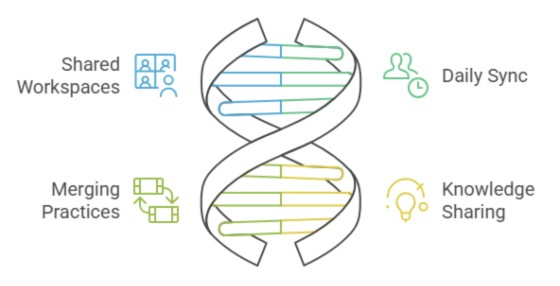Why Should Platform Engineering Teams Focus on Continuous Merge?
Status
answered
Status
answered
The complexity of platform engineering has risen exponentially because of microservices architectures, cloud-native platforms, and distributed systems.
Platform teams of high-performance organizations do multiple deployments per day. They maintain availability at 99.99%. However, traditional integration practices are not sufficient to maintain that performance level. That’s why continuous merging is a critical practice.
Tech giants like Netflix, Google, and Amazon have already adopted continuous merging practices into their platform engineering teams. They can handle thousands of changes without any disruptions.
Continuous merge frequently integrates code changes into the main branch in an automated way. This helps teams to keep branches small, short-lived, and continuously synchronized with the main branch.
Let’s consider a real-world scenario to understand the importance of continuous merge. In January 2017, the GitLab team accidentally deleted its production database. This incident happened while changing database infrastructures within multiple teams at once.
Root Cause
Impact
If they had continuous merging practices, they could have discovered these changes early and taken preventive actions.
In past years, many similar incidents have occurred. Therefore, let’s examine the key benefits of continuous merging.
Code integration is a challenging task in software development. For instance, consider a scenario where 10 developers code for 10 days and then try to merge all of their work at once. This may cause a large number of merge conflicts and difficulties in understanding which changes are correct.
If they had followed continuous merging, developer changes would have been merged to the main branch two or three times per day. This would have made it easier to resolve merger conflicts and kept the main branch stable throughout the process.

With continuous merge, developers submit pull requests with small changes, making it easy to review the code changes and merge them to the staging environment or provide feedback to the developers.
Compared to traditional approaches, which typically take days to complete, a continuous merging approach will only take hours, speeding up the development life cycle.

Code quality is critical for the success of software projects. Usually, development teams configure automated quality checks in their CI/CD pipelines.
Since a pull request has a small number of changes, these checks will be completed quickly and cover a variety of checks, such as linting rule verification, code formatting verification, code complexity, test coverage, and security issues.
In addition, continuous merge helps maintain clear and quality documentation release notes.

Issues can be detected early because of small code integrations and frequent testing. If a failure occurs, the impact is limited to the latest changes, and developers can quickly recover by reverting the commit or identifying the root cause. This ensures the high availability of the system and improves end-user trust in your system.

Team collaboration and visibility are crucial in platform engineering. Working in shared workspaces requires regular syncs to keep everyone aligned. Continuous merging helps manage cross-team dependencies, ensuring that the latest updates are shared. This approach improves knowledge sharing, prevents misalignment, and keeps development moving smoothly.
The success of digital platform engineering depends on having an efficient and reliable development process. Continuous merging practices can lower integration issues, improve developer productivity, and improve code quality. This process relies on layers of automated testing, clear guidelines, and strong team collaboration.
